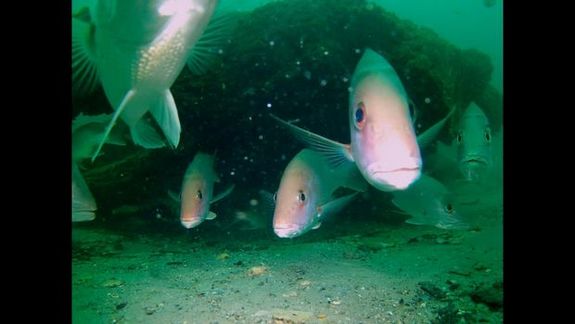Divers Discover A 50,000 Year Old Underwater Forest In The Gulf Of Mexico
This article is more than 2 years old
Here’s a scenario. You’re our for a nice relaxing scuba dive, casually flippering your way through the clear Gulf of Mexico waters, taking in the majesty of nature and all that, and then you see something you don’t expect, a forest. While that’s not exactly the way it went down, a group of divers did recently discover a “primeval underwater forest” just off the coast of Alabama.
A half-square-mile forest of Bald Cypress was likely buried under sediment for more than 50,000 years, preserved in pristine condition in an oxygen-free environment about 60 feet below the surface. The area was most likely uncovered and exposed back in 2005, when Hurricane Katrina ravaged the region. Some of the stumps and trunks are massive, as you can see in this video, almost the size of cars. According to Ben Raines, executive director of nonprofit Weeks Bay Foundation, and one of the first divers to explore the find, the Cypress trees are in such good condition that, if you cut them, they still smell like fresh sap.
While the Cypress grove lasted for thousands of years, now that it has been uncovered, researchers have only a few years to study them before the usual course of nature catches up with them. Current projections estimate there is a window of approximately two years. Uncovered for only a few years, you can already see the impressive amount of sea life that has taken up residence in the area. Fish of all varieties, along with fields of anemones and crustaceans, flocked to the this pseudo reef, creating a whole new arm of the ecosystem.
It was actually all of this life that first drew attention to the region. Fishermen discovered that, after Katrina, the area was teaming with fish, and though they suspected there may be something lurking below, attracting all of this wildlife to the area, they were reluctant to reveal the location, lest their new hot spot get overrun with outsiders. Though he heard the rumors, it took Raines some time to find anyone who would reveal the secret location. But when he and a diver friend finally explored the region, well, you know what they found.
Researchers from Louisiana State University and the University of Southern Mississippi have taken an interest in the discovery. Carbon dating puts some of the Cypress stumps at 52,000 years old. The scientists hope that examining the growth patterns of these trees will provide insight into the history of the Gulf of Mexico. Since each of this particular brand of Cypress can live for thousands of years, each of these tree is a potential historical time capsule, and could give a view of the region that spans thousands of years.













